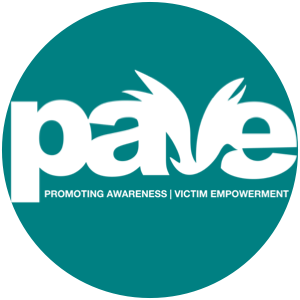Healthy Communication
Written By: PAVE’s Executive Intern, Kaitlin Durkin
February is Teen Dating Violence Awareness and Prevention Month, and this week PAVE is doing a 5-day campaign to educate on this topic. Teen dating violence is a silent issue. Many feel as though dating violence does not start until college which is concerning as 1 in 11 female high school students and 1 in 15 male high school students have reported being physically abused by a dating partner in the past year (CDC). Equally concerning, 81% of parents believe that teen dating violence either is not an issue or they do not know if it is an issue (Love is Respect). Now more than ever, education needs to be provided to teens, parents, and guardians on the serious and prevalent issue of teen dating violence.
Healthy communication is essential in relationships and between parents and their teenagers. We have all heard the saying that communication is key in a relationship which sounds cliche but is very true. Good communication can have varying definitions, but importantly it consists of sharing and feeling comfortable sharing one’s thoughts and feelings. Additionally, good communication includes listening to your partner, sibling, partner, or peer. This may sound simple to some; however, good communication can be hard when it is something you are never taught or thought about before.
Unsure of how to communicate in a relationship? A good way to start is by setting aside time to talk. When you set aside time to talk, it allows you and the other person to expand on what went on during their day or why they are upset. This can help you learn more about them and/or help find a solution to the problem. Additionally, it may help to use open-ended questions. This allows one to think about how they are feeling and share exactly what is on their mind. When having these conversations, remember that you both are equally important in the conversation. You both should feel heard and have the ability to express your thoughts. These tips can help you express what you are feeling in any type of relationship.
It is important that parents communicate these tips with their teens as well as talk about other ways a relationship can be healthy. Here are some ways parents can communicate to their teens about healthy relationships, consent, and communication. Many parents have found success talking to teenagers about difficult topics while driving in the car. It's informal, and there is a lot less direct eye contact. This can make teenagers feel more at ease and less judged throughout the conversation. Ask your teenager what they would look for in a romantic partner. This can be a starting point to teaching them about positive qualities such as communication, respect, and boundaries. This also is an opportunity to talk about abusive behaviors such as extreme jealousy, possessiveness, and control. Additionally, it is important for parents to educate on consent and bystander intervention. Teach teenagers the five essentials of getting consent: verbal, sober, enthusiastic, freely given, and consistent. Even at a young age, teach consent by not forcing physical affection and respecting boundaries. Finally, ask your teenager what they would do if they saw one of their friends doing or saying something that was potentially abusive. Talk about what obstacles prevent them from responding and help them brainstorm ways to intervene. All of these tips will help you create a safe space to educate your teen and for them to ask you questions.
If you are in need of more information on healthy communication or how to talk to teens, PAVE is here for you! We would love to share more information on these important conversations.
